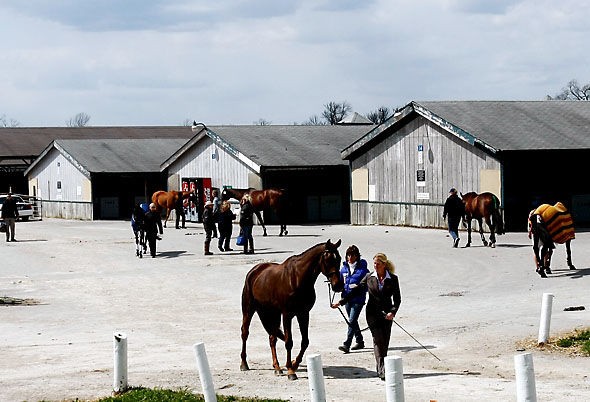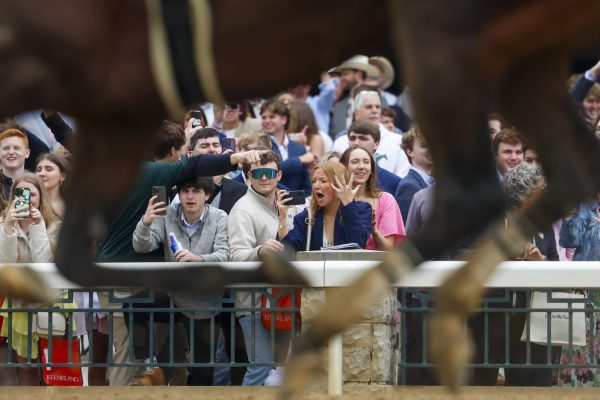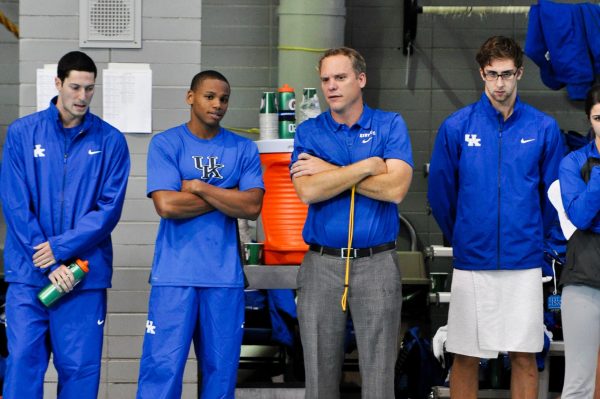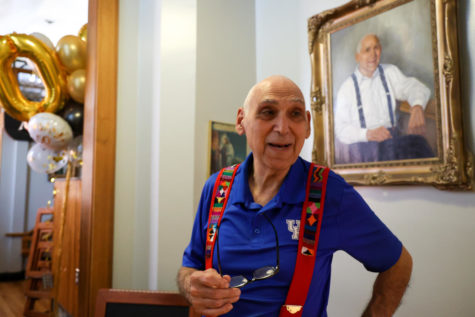Competition changes safety rules to protect horses and riders

April 23, 2009
By Elliott Hess
After the deaths of two horses and the severe injury of a rider at last year’s Rolex Kentucky Three-Day Event, and the deaths of 21 horses at a polo competition in Wellington, Fla., last week, safety is on the minds of the trainers and the director at the start of this year’s Rolex event.
But event director Jane Atkinson said tensions are not too high in regards to protecting the horses.
“We’ve had good security restrictions in place for 30 years,†Atkinson said. “The stabling should be very secure. Access should be limited to those with wristbands. Active security personnel are there 24 hours a day. It would be hard to increase it any more than we have.â€Rolex held a safety forum in Lexington during the early planning stages of this year’s event, which resulted in changes to the United States Equestrian Federation rules.
The main change is a “return to play†rule, said USEF spokeswoman Joanie Morris. This new rule means a fallen rider cannot return to competition until a doctor has cleared him or her. Horses or riders that fall twice in six months to a year’s time must be downgraded to a lower competitive level.
Competitions must also have additional safety personnel on hand.
Discussions on the safety of jumps on the cross-country course, particularly large and immovable objects like logs, are still going on.
The UK College of Engineering is conducting an ongoing study on frangible pins, which allow a jump to be dismantled when a horse hits it hard enough. This prevents the horse and rider from flipping over the jump, Morris said.
These safety precautions seem to be working, Atkinson said. According to the United States Eventing Association, there have been no fatalities at three-day competitions in the U.S. this year.
Rolex Kentucky Three-Day Event — the largest annual equine competition held at the Kentucky Horse Park — begins today with the first of two days of the dressage test.
Dressage tests the gaits, suppleness and obedience of the horse through a series of prescribed movements, Atkinson said.
The equine triathlon continues throughout the rest of the weekend. The cross-country test on the second competition day proves the speed, stamina, courage, boldness and jumping ability of the horse and the rider’s knowledge of pace and use of the horse across country. The jumping test in an arena on the third day provides the final test of the horse’s athletic ability, conditioning and training.
For more information about the Rolex Kentucky Three-Day Event, visit the event’s Web site, (www.rk3de.org).






















































































































































